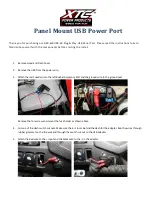
Driving safety systems
56
G
Risk of accident
If BAS has malfunctioned, the braking sys-
tem remains available with full brake boost-
ing effect. However, braking force is not
automatically increased in emergency
braking situations and the stopping dis-
tance may increase.
Adaptive brake lamps
i
Adaptive brake lamps are only available in
certain countries.
If you brake sharply from a speed of more
than 50 km/h or if braking is assisted by BAS,
the brake lamps flash rapidly. In this way,
traffic travelling behind you is warned in an
even more noticeable manner.
If you brake sharply from a speed of more
than 70 km/h to a standstill, the hazard warn-
ing lamps are activated automatically. If the
brakes are applied again, the brake lamps
light up continuously. The hazard warning
lamps switch off automatically if you travel
faster than 10 km/h. You can also switch off
the hazard warning lamps using the hazard
warning switch button (
Y
page 80).
ESP
®
(Electronic Stability Program)
ESP
®
monitors driving stability and traction,
i.e. power transmission between tyres and
the road surface.
ESP
®
detects when a wheel spins or the vehi-
cle starts to skid. ESP
®
stabilises the vehicle
by targeted braking of individual wheels and
by limiting engine power. It assists you when
pulling away on wet or slippery roads. ESP
®
also stabilises the vehicle during braking.
When ESP
®
intervenes, the
v
warning
lamp flashes in the instrument cluster.
G
Risk of accident
If the
v
warning lamp in the instrument
cluster flashes, proceed as follows:
R
only depress the accelerator pedal as far
as necessary when pulling away.
R
adapt your driving style to suit the pre-
vailing road and weather conditions.
The vehicle could otherwise go into a skid.
ESP
®
cannot reduce the risk of an accident
if you drive too fast. ESP
®
cannot override
the laws of physics.
!
The ignition must be switched off (key in
position 0 or 1 in the ignition lock), if:
R
the parking brake is being tested using a
dynamometer
R
the vehicle is being towed with the front
axle raised
Application of the brakes by ESP
®
could
otherwise destroy the brake system on the
front axle.
i
Only use wheels with the recommended
tyre sizes. Only then will ESP
®
function
properly.
Steering assistant STEER CONTROL
The steering assistant STEER CONTROL helps
you by transmitting a noticeable steering
force to the steering wheel in the direction
required for vehicle stabilisation. This steer-
ing assistance is provided in particular if:
R
both right wheels or both left wheels are on
a wet or slippery road surface when you
brake
R
the vehicle starts to skid
You have control over the steering at all
times.
G
Risk of accident
If there is an ESP
®
malfunction, you will not
receive any steering assistance from the
Safety
169_AKB; 2; 4, en-GB
wdomann,
Version: 2.10.6
2008-07-16T08:52:06+02:00 - Seite 56
Dateiname: 6515_0315_02_buchblock.pdf;
preflight
















































